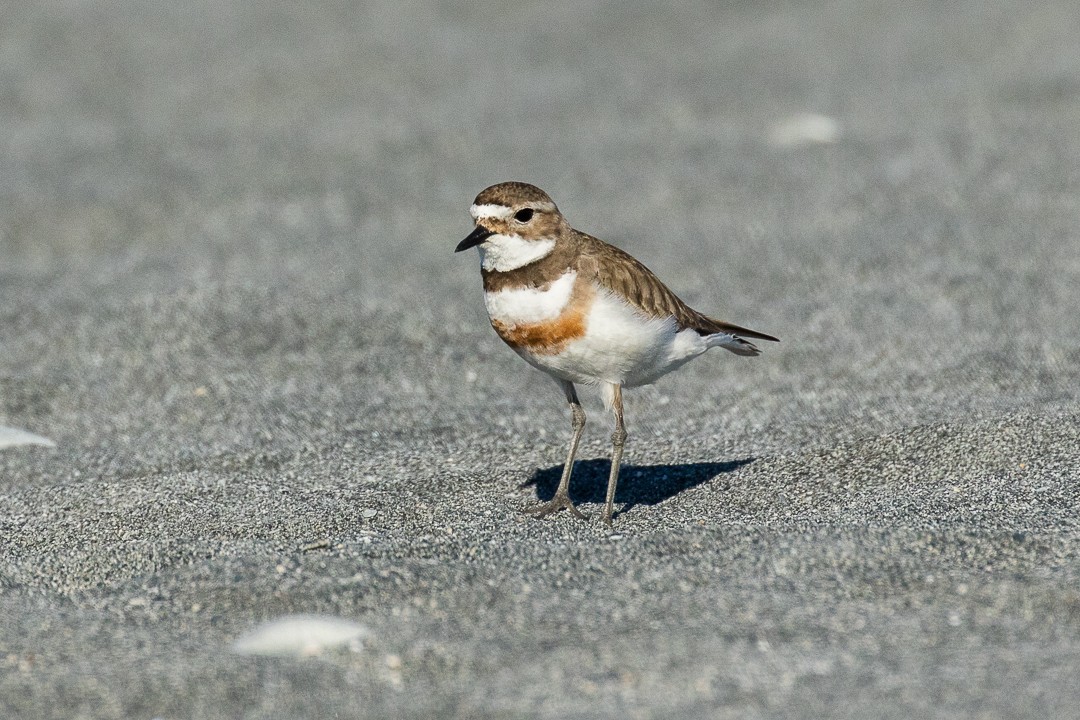Double-banded Plover
A species of Typical plovers Scientific name : Charadrius bicinctus Genus : Typical plovers
Double-banded Plover, A species of Typical plovers
Botanical name: Charadrius bicinctus
Genus: Typical plovers
Content
Description General Info
 Photo By Francesco Veronesi , used under CC-BY-SA-2.0 /Cropped and compressed from original
Photo By Francesco Veronesi , used under CC-BY-SA-2.0 /Cropped and compressed from original Description
The double-banded plover is distinguished by a dark, grey-brown back with a distinctive white chest and a thin band of black situated just below the neck running across the chest along with a larger brown band underneath. During breeding season, these bands are more dominantly shown on the males compared to females. Younger birds have no bands, and are often speckled brown on top, with less white parts. These shorebirds have relatively long legs to allow them to easily wade around shallow waters and move efficiently around sandy beaches. Their long- pointed wings aid in traveling long distances as they allow the bird to be very agile. The double-banded plovers' head is prominent with their large, dark-brown eyes and sturdy black bills. Due to similar colors within the plovers ideal habitat, spotting these birds can be difficult to achieve however, the "chirp-chirp" call is easily heard and their habit of running quickly then pausing to feed on food can catch the eye of observers. 
Size
21 cm
Life Expectancy
12 years
Nest Placement
Ground
Feeding Habits
Double-banded Plover forage for aquatic invertebrates, insects, and berries, employing varied techniques. Daytime foraging involves alertness and fast-paced movement towards prey, while night foraging uses stillness for ambush. Diets differ on breeding grounds, including larvae and beetiles, highlighted by fecal analysis.
Habitat
Double-banded Plover primarily thrives in coastal and riverine environments, favoring sandy beaches, sandpits, and gravelly riverbanks. During breeding, they occupy montane areas with minimal vegetation and occasionally open pastures and farmlands. In the non-breeding season, double-banded Plover expands to coastal wetlands, including estuaries and lagoons, often roosting in flocks on secluded islets and protected beaches.
Dite type
Aquatic invertebrate eater
General Info
Feeding Habits
Bird food type
Species Status
Prior to 1908, banded dotterels in New Zealand were shot in large numbers by market gunners upon the return of these migrating birds for breeding. However, in 1908, the banded dotterels were placed on the protected list, prohibiting any more shootings from occurring to the point where they are now moderately common. In 2013 local Maori in the Pencarrow Coast, Wellington region, placed a rahui on the area, to protect 20 pairs of banded dotterel from dogs and cars. This species has the conservation status of "Regionally Vulnerable" in the Wellington region. 
Scientific Classification
Phylum
Chordates Class
Birds Order
Shorebirds Family
Plovers Genus
Typical plovers Species
Double-banded Plover